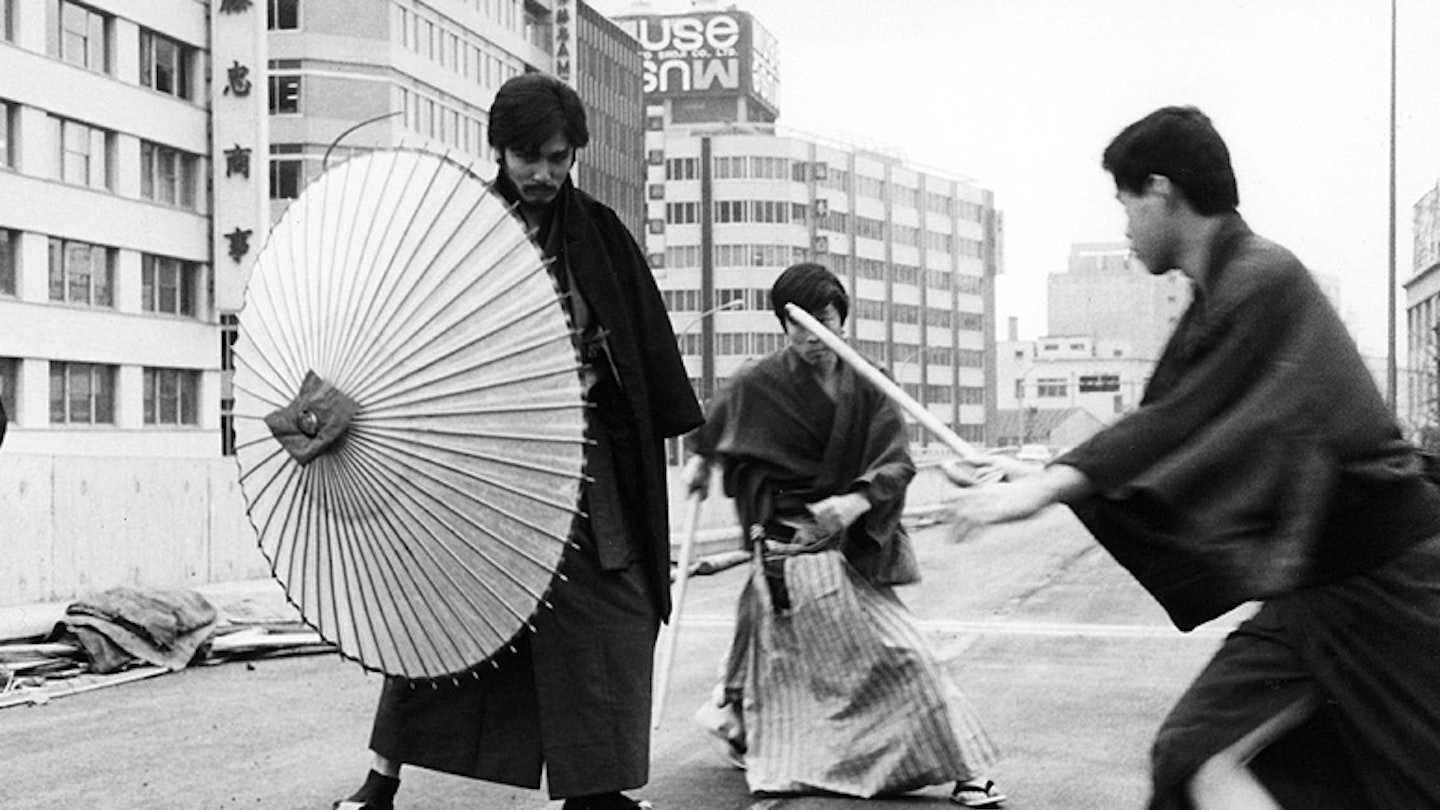Key filmmakers: Nagisa Oshima, Shohei Imamura, Kiju Yoshida, Susumu Hani, Seijun Suzuki
Key dates: 1975-1985
What is it? The French weren’t the only ones with a '60s new wave. In Japan, the Nuberu Bagu, a fractured movement spurred on by social turmoil, brought yakuza, criminal antiheroes and all manner of subversion to the big screen. For a decade and a bit Japanese cinema entered its own realm of the senses. The more austere stylings of Ozu and Mizoguchi fell out of vogue as directors like Nagisa Oshima, Susumu Hani and Shohei Imamura, nonplussed by their country’s cosying up to US, rejected the old ways – formal framing, historical tales and traditional characters – in favour of stories filled with delinquent youths, lurid sexual expression and broken societies.
In other words, anyone who’d found Floating Weeds a little short on erect penises and bloody gang violence was in for a treat. These bold cinematic visions didn’t always come easily to the screen, however. Nuberu Bagu filmmakers originated within film studios – unlike their European brethren – but still met resistance and censorship. Works like Kiju Yoshida’s Escape From Japan suffered extensive cuts and Oshima’s satire Night And Fog In Japan was shelved when a politician was assassinated shortly after its release.
The wave began to break in the early '70s as the studio system deteriorated and funding became scarce. Its main bellwethers headed off in search of various pursuits: Shinoda returned to more conventional filmmaking, Imamura revisited documentaries, and Oshima looked abroad.

What to watch: Naked Youth (1960), Bad Boys (1961), She And He (1963), The Pornographers (1966), Death By Hanging (1968) (pictured above), Diary Of A Shinjuku Thief (1969), Eros Plus Massacre (1970) (pictured top)
What did it influence? The new wave inspired a whole generation of directors within Japan and its influence is still felt overseas. Seijun Suzuki’s Tokyo Drifter informs Nicolas Winding Refn’s work, while Branded To Kill left its stamp on Quentin Tarantino’s visual style.
Trivia: Heavily censored in Japan, In The Realm Of The Senses’ celluloid had to be developed in France.
What to say: “What is obscene is what is hidden.” (Nagisa Oshima)
What not to say: “Feel like watching In The Realm Of The Senses, gran?”
